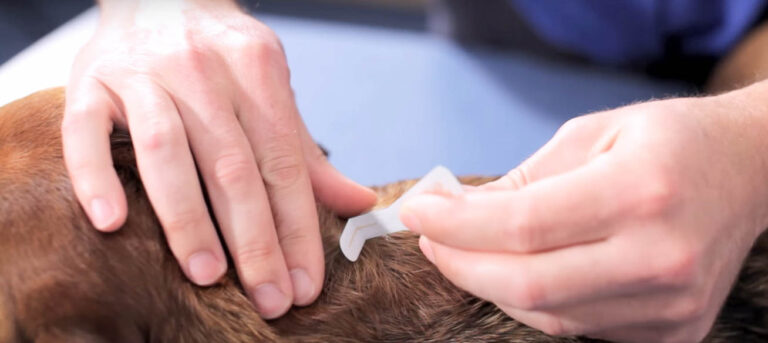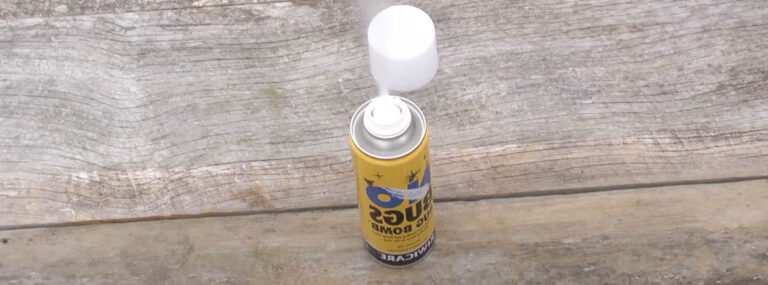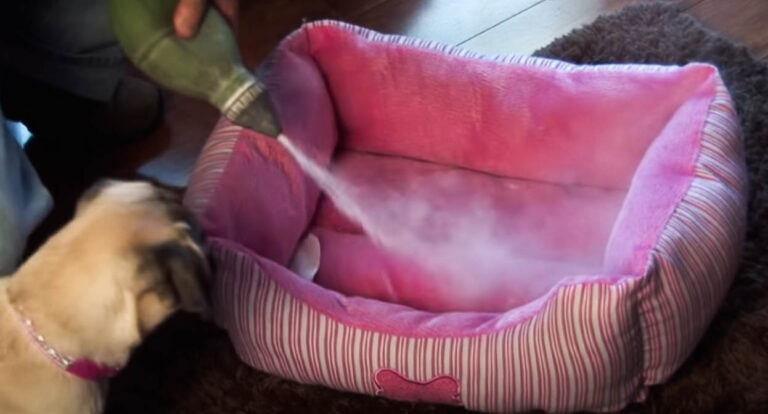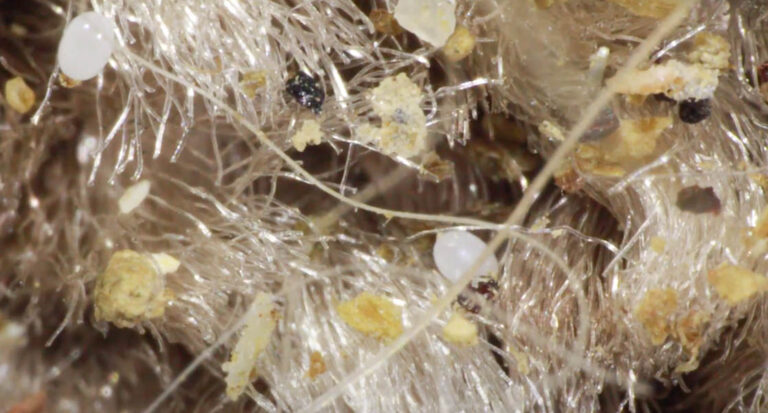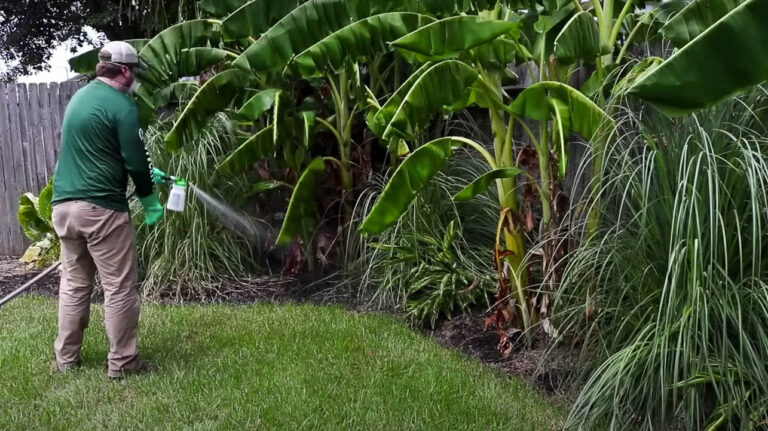About Dog Fleas
About Dog Fleas
Dog fleas, like other flea species, are tiny blood-sucking insects that feed on the blood of animals. Scientifically known as Ctenocephalides canis, these insects prefer to live in the fur of dogs and feed on their blood, but can also be found on other animals like cats. These tiny insects will grow no longer than 2 mm in length, and yet they are experts at terrorizing our furry friends.
Appearance
Adult dog fleas are tiny reddish-brown wingless insects with scaly bodies that measure between 1 and 2 mm. They have flattened bodies and 6 legs, with 3 on each side of the abdomen, the hind legs are very long and well-adapted for jumping. Fleas are quite visible to the naked eyes and it’s not uncommon to see them jumping around.
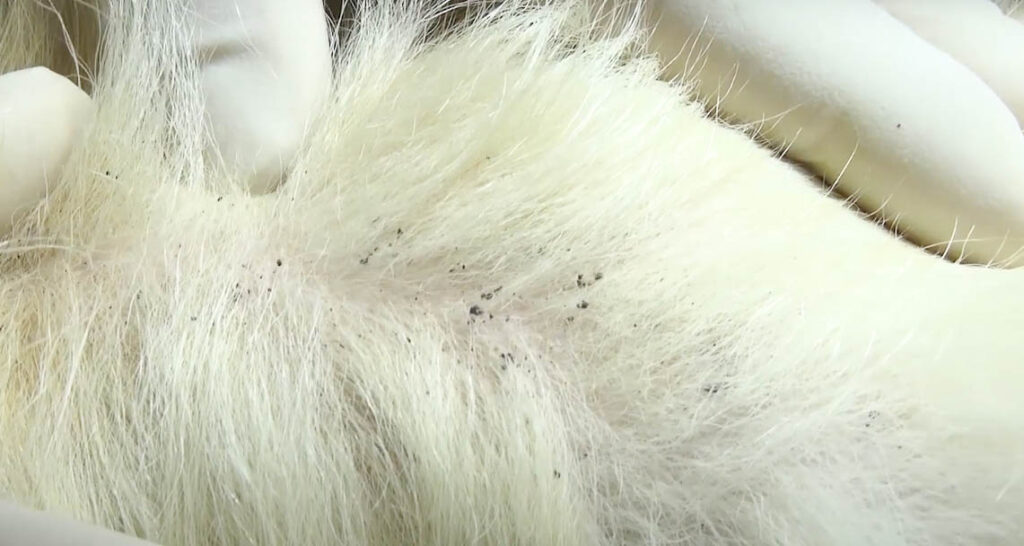
Behavior
The life of a flea starts as a tiny white oval-shaped egg that transforms into a larva, a cocoon, and finally an adult flea with the incredible ability to jump around and feed off warm-blooded animals. They prefer to latch onto furry animals and hide within their coat while piercing and drinking blood at will.
The life of an adult flea revolves around sucking enough blood and laying tons of eggs every day, an adult flea will live between 7-14 days and within this period the females will lay no less than 20 eggs every day. To feed on their host, fleas will jump on the animals and using sharp needle-like mouthparts that also act as tubes, these blood-suckers will pierce the skin of their host and drink as much blood as possible, and while at it, they release their saliva which is laced with an anticoagulant that prevents blood clots.
Six well-adapted legs ensure they maintain a good grip while feeding and their hard scaly bodies ensure they don’t get crushed if they fall off their host. Fleas are very fast for insects without wings, their hind legs act like elastic springs that launch them in the air and propel the insects forward, and when they land fleas use tiny claws at the tips of their legs to grasp the surface.
Damage They Cause
Fleas will jump on animals and crawl into their fur in search of a good place to deliver very painful and irritating bites. Their bites cause nasty itching problems for pets and other animals, and sometimes this may lead to some secondary skin conditions. Some pets are allergic to the saliva of fleas and this can cause what is called Flea Allergic Dermatitis.
Both male and female fleas feed on blood alone, therefore a flea infestation on small or sick animals can be very deadly and lead to significant blood loss causing anemia and intense dehydration which can be fatal. Flea bites can be a source of very serious discomfort for animals and the continuous itching and scratching can lead to significant loss of fur and visible rashes and hives on the bodies of dogs and cats.
Humans are not immune to flea bites, fleas are known to also deliver irritating bites on humans especially on the ankles and feet. These bites will be red, swollen, and itchy, and continuous itching can cause a major skin condition. Fleas have also been known to transmit diseases to humans and animals, and they transmit the bacteria responsible for Lyme disease.

Infestation Signs
Fleas are notorious for their nasty itchy bites and this is usually the very first sign of a flea infestation. If your pet is obviously restless and itching uncontrollably, then chances are that
they are being eaten up by fleas.
Cats and dogs that are suffering the itchy bites of fleas tend to over-groom themselves, and you will notice this when they keep biting and scratching their bodies, even digging deep in a way that suggests that they are trying to get something off of them. Because fleas prefer to live and feed on the furs of animals rather than humans, infestation signs are more evident in animals.
Actually, homes with animals are more likely to suffer a flea infestation than those who have no animals, because these insects may latch on to your pet while you’re out for a stroll or stumble on another animal with fleas and subsequently follow you home, and they multiply pretty fast. You can also see fleas jumping out of your pet’s fur, especially if you have a pet with white fur.
If you notice tiny dark wingless insects that seem to disappear almost as soon as you see them, then they may be fleas feeding on your pet. Any evidence of a flea infestation should not be taken lightly, consult a vet ASAP to get treatment for your pet and get in contact with a pest control company to help rid your home of these nasty blood-sucking insects.

